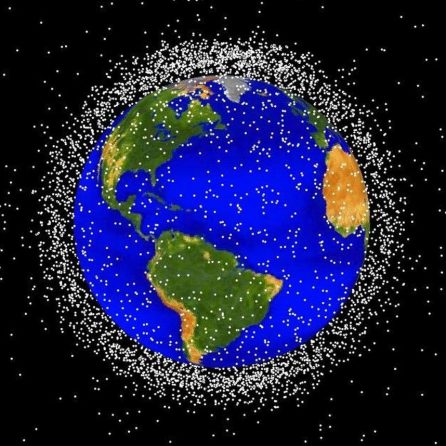Orbital Capacity

ARCLab’s orbital capacity work is split into two main areas: intrinsic capacity, which looks at geometric constraints to satellite placement in Low Earth Orbit (LEO), and risk-based capacity, which assesses limitations to orbital use associated with debris, fragmentation events, and environmental trends.
Intrinsic Capacity:
Intrinsic capacity looks at how placement of satellites, particularly large constellations, constrain subsequent orbital use by others. Various expert groups have recommended uncoordinated large constellations should not overlap in physical volume. Our work, performed in partnership with collaborators Profs. David Arnas and Martin Avendaño, describes quantitative limits and tradeoffs associated with orbital shell placement subject to this constraint. Our capabilities include:
- Estimating how many satellites/shells can fit in a particular region of LEO, based on spacing assumptions. This helps quantify the opportunity cost of particular orbital configurations, e.g. shells with overly wide altitude tolerances.
- Demonstrating space-efficient periodic reference orbits that could improve safe orbital density by a factor of 2-20x.
- Computing remaining intrinsic capacity in a particular orbital shell, based on expansions compatible with existing traffic. While operators do not currently share shells in a compatible manner, increased congestion may someday spur interest in multi-operator shell-sharing.
Risk-based Capacity:
Risk-based capacity, or carrying-capacity, looks at the quantity and configuration of objects that can be placed subject to various constraints. ARCLab is developing the MIT Orbital Capacity Assessment Tool (MOCAT). MOCAT is a suite of MATLAB models to assess the evolution of Low Earth Orbit over long periods of time under different assumptions. There are currently two main portions of MOCAT, MOCAT Monte Carlo (MOCAT-MC), which uses super-computing to evaluate environmental trends in higher fidelity, and MOCAT Source Sink Evolutionary Model (MOCAT-SSEM), which uses a lower fidelity modeling approach capable of running on a personal computer in seconds to minutes.
Both tools exist with a basic level of functionality. MOCAT-MC runs are regularly being performed on MIT’s supercomputer to explore a variety of potential future scenarios and optimize the codebase. Runs show good agreement with outputs of the European Space Agency’s DELTA tool.
MOCAT-SSEM models have been used to compute capacity based on comparison to steady state orbital equilibria and numerical optimization methods. The models have been progressively expanded to incorporate additional physical phenomena. At AMOS 2023, we presented a paper demonstrating how models could be used as part of an adaptive mission authorization workflow by a regulator.
Efforts are ongoing to verify and calibrate both types of models against each other and several other high-fidelity tools including DAMAGE (University of Southampton), DELTA (European Space Agency), and ADEPT (Aerospace Corporation). After preliminary verification is completed, we intend to publicly release both models. In the meantime, we invite inquiries from parties interested in pre-release access to MOCAT.
Image: Andrea D’Ambrosio / MIT
